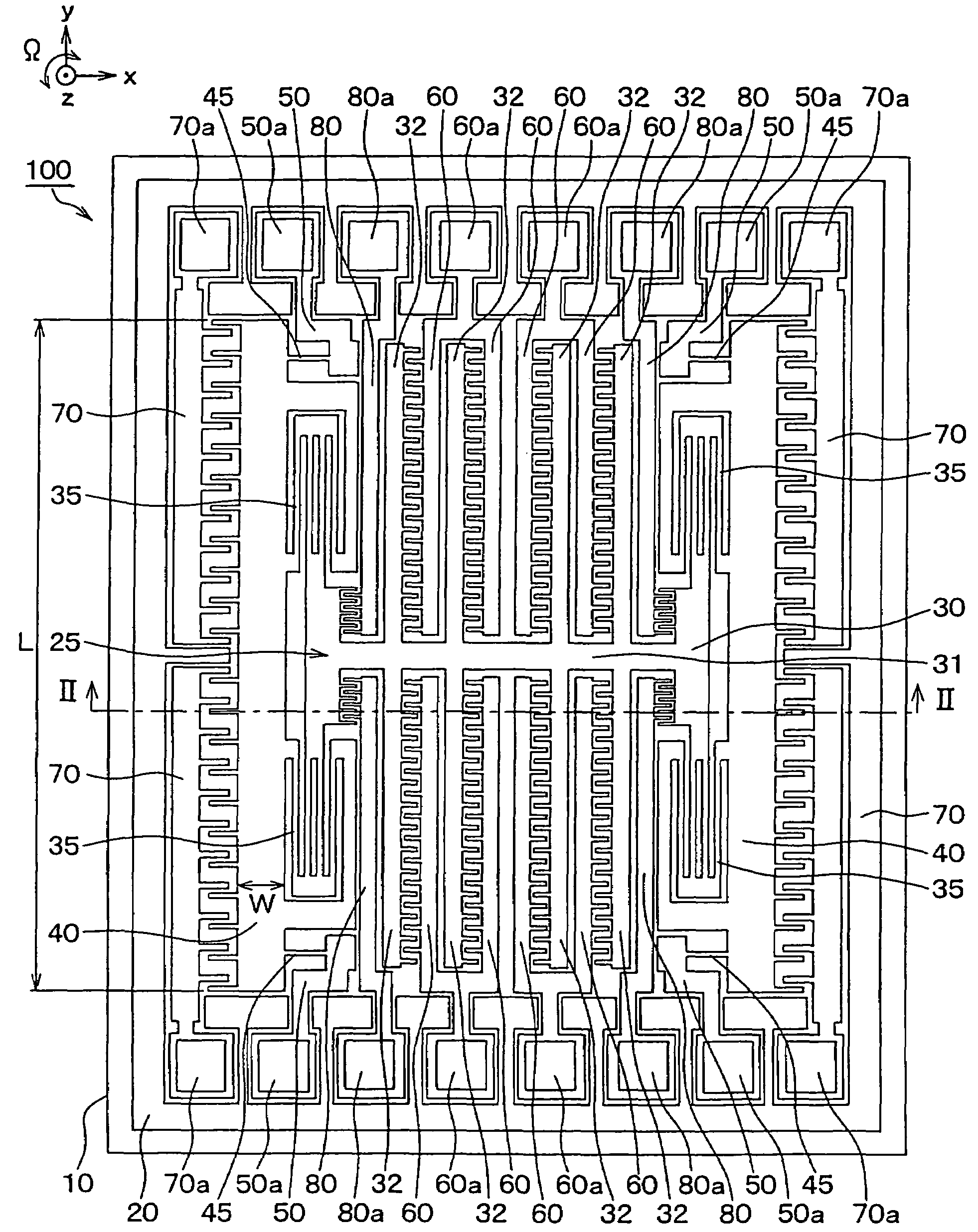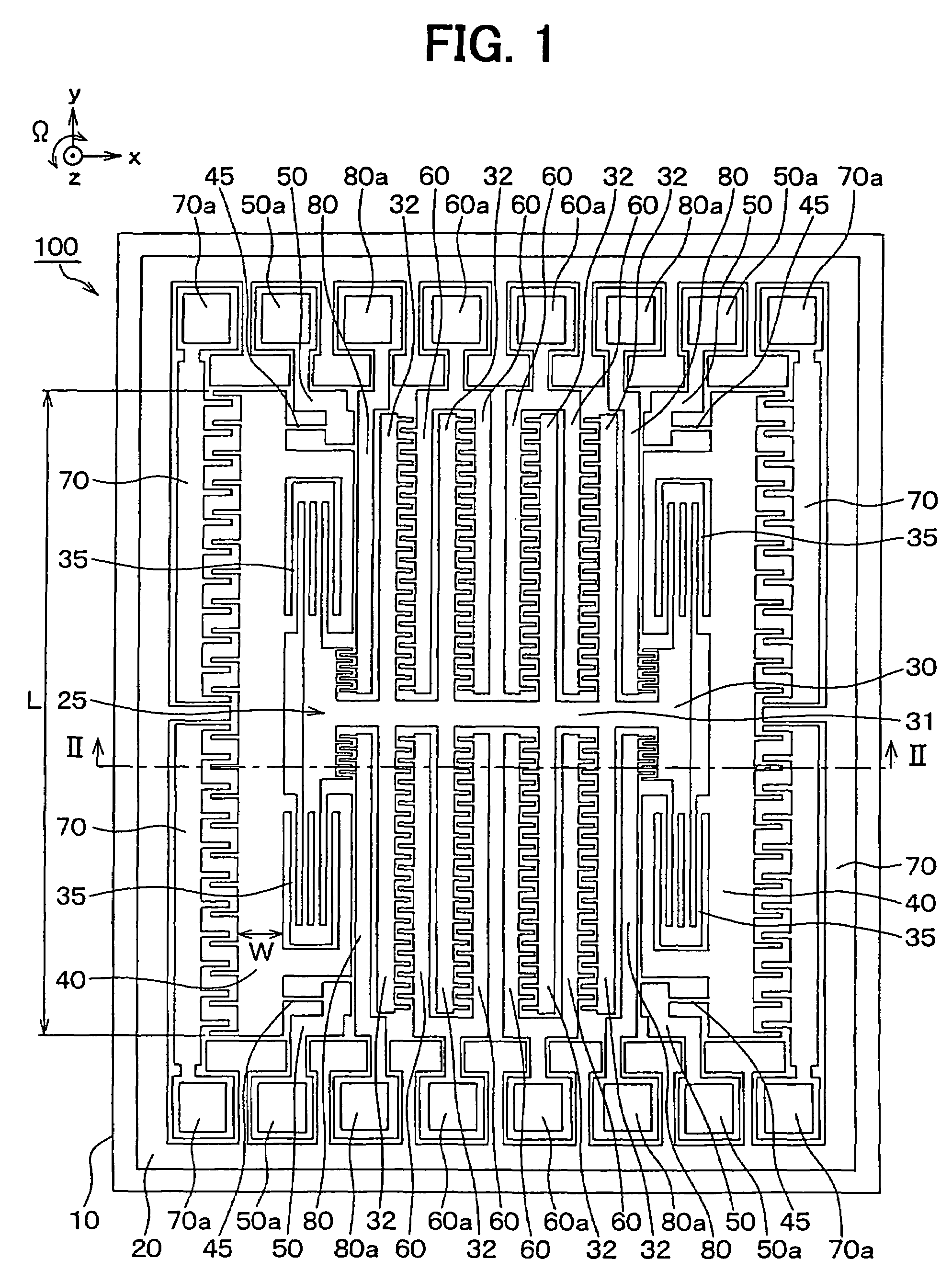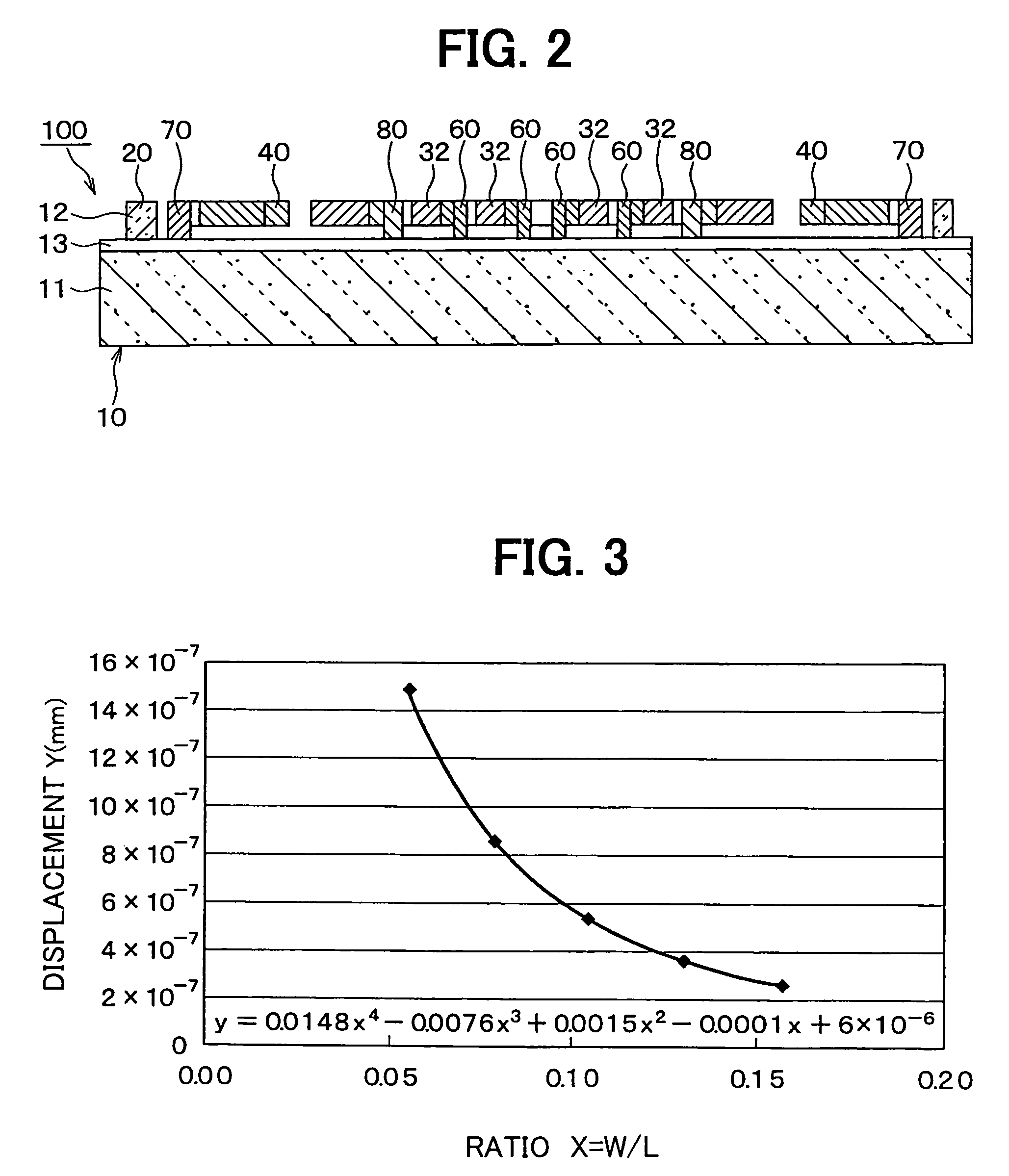Angular rate sensor and mounting structure of angular rate sensor
a technology of angular rate sensor and mounting structure, which is applied in the direction of acceleration measurement using interia force, turn-sensitive devices, instruments, etc., can solve the problems of small amount of vibration produced by drive-purpose vibrators with respect, detection output error, and adverse influences caused by the upper and lower vibrations of vehicles, etc., to achieve stable driving vibration of vibrators.
- Summary
- Abstract
- Description
- Claims
- Application Information
AI Technical Summary
Benefits of technology
Problems solved by technology
Method used
Image
Examples
first embodiment
[0034]The Inventors of the present invention experimentally manufactured and investigated angular rate sensors with respect to a related art. FIG. 4 is a diagram for schematically showing a plane structure of an angular rate sensor as a trial product thereof.
[0035]This angular rate sensor is made of a semiconductor substrate 10 such as a silicon substrate. Since trenches have been formed in this semiconductor substrate 10 by employing the well-known semiconductor manufacturing technique such as an etching process, as indicated in FIG. 4, a movable electrode 25 and respective electrodes 60, 70, 80, have been segmented to be formed. The movable electrode 25 contains vibrators 30 and 40.
[0036]The movable electrode 25 has been arranged by providing a drive-purpose vibrator 30, an angular velocity detection-purpose vibrator 40, a drive beam 35 for coupling both the vibrators 30 and 40 to each other, and a detection beam 45 for coupling the angular velocity detection-purpose vibrator 40 t...
second embodiment
[0105]The inventors have preliminary studied about an angular rate sensor mounted in such a way that a detection axis corresponding to a rotation axis of an angular velocity is directed to an upper and lower direction of a vehicle, namely the vertical direction. FIG. 8 is a diagram for schematically representing a mounting condition of such an angular rate sensor 500. It should be understood that a base member is omitted in FIG. 8.
[0106]While two pieces of vibrators 520 have been provided in this angular rate sensor 500, each of the vibrators 520 is driven to be vibrated along an “x” direction corresponding to a first direction, and further, when an angular velocity “Ω” is applied, each of the vibrators 520 is vibrated so as to detect the applied angular velocity “Ω” along a “y” direction corresponding to a second direction by Coriolis force.
[0107]In this case, an “x-to-y” plane corresponds to a horizontal plane, and a detection axis “z” of the angular velocity “Ω” corresponds to th...
PUM
 Login to View More
Login to View More Abstract
Description
Claims
Application Information
 Login to View More
Login to View More - R&D
- Intellectual Property
- Life Sciences
- Materials
- Tech Scout
- Unparalleled Data Quality
- Higher Quality Content
- 60% Fewer Hallucinations
Browse by: Latest US Patents, China's latest patents, Technical Efficacy Thesaurus, Application Domain, Technology Topic, Popular Technical Reports.
© 2025 PatSnap. All rights reserved.Legal|Privacy policy|Modern Slavery Act Transparency Statement|Sitemap|About US| Contact US: help@patsnap.com



